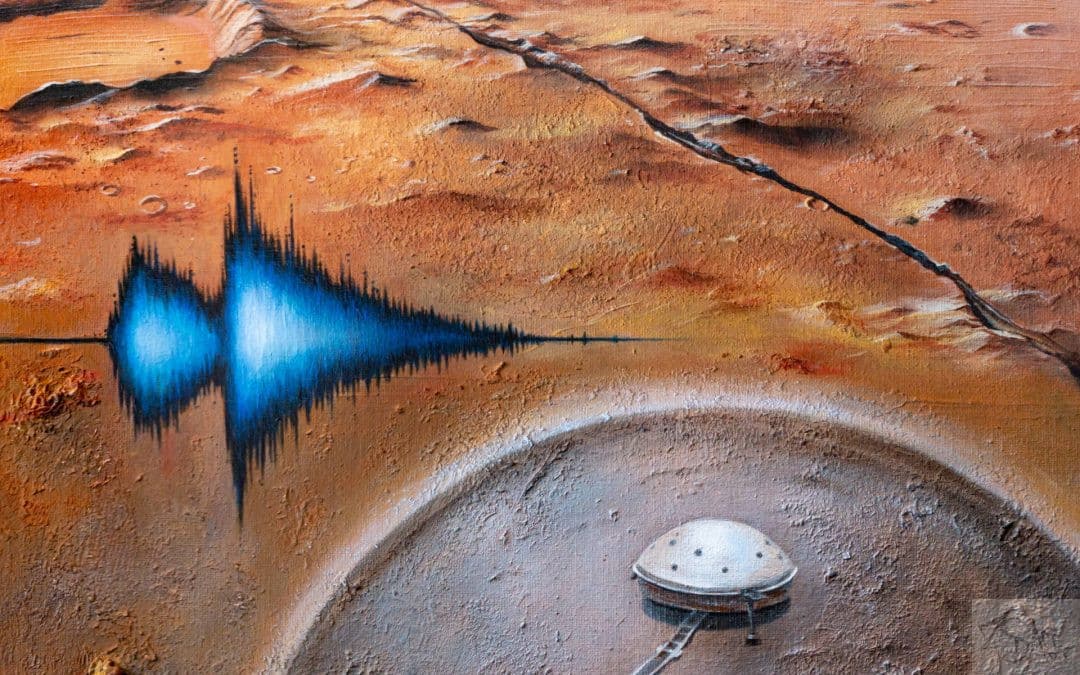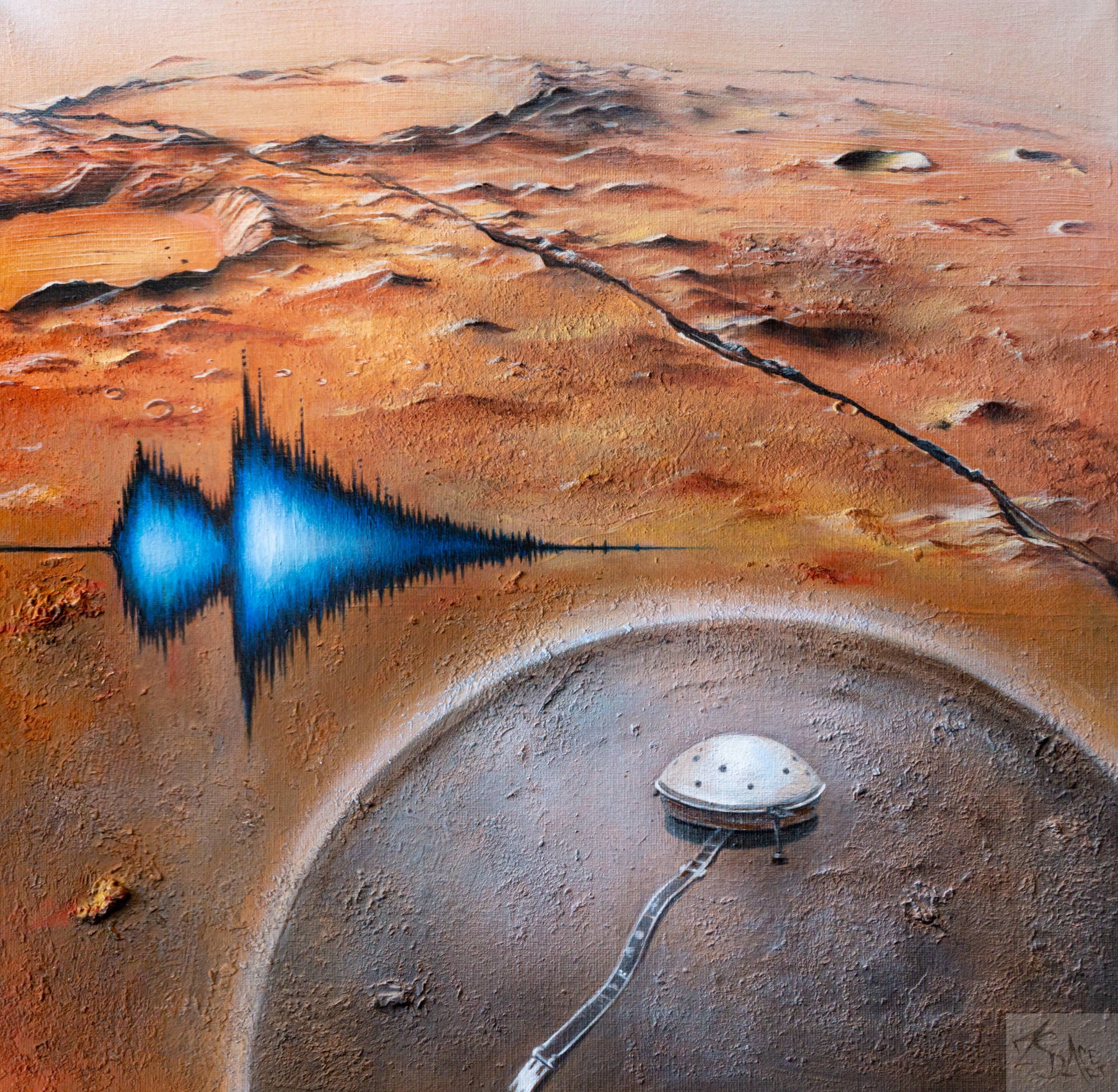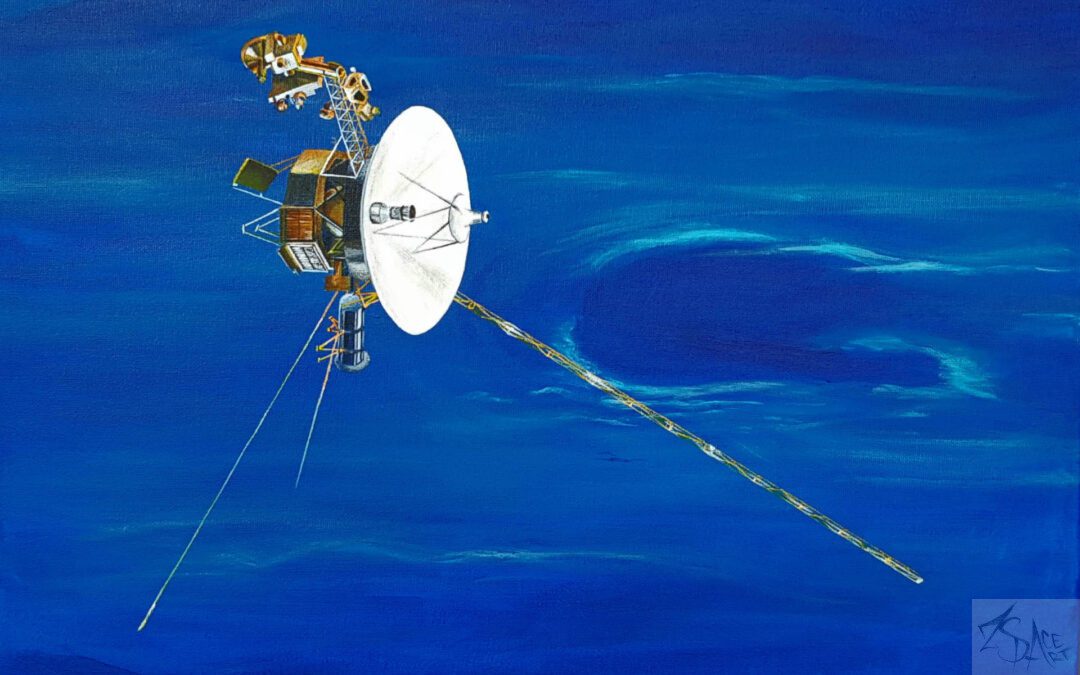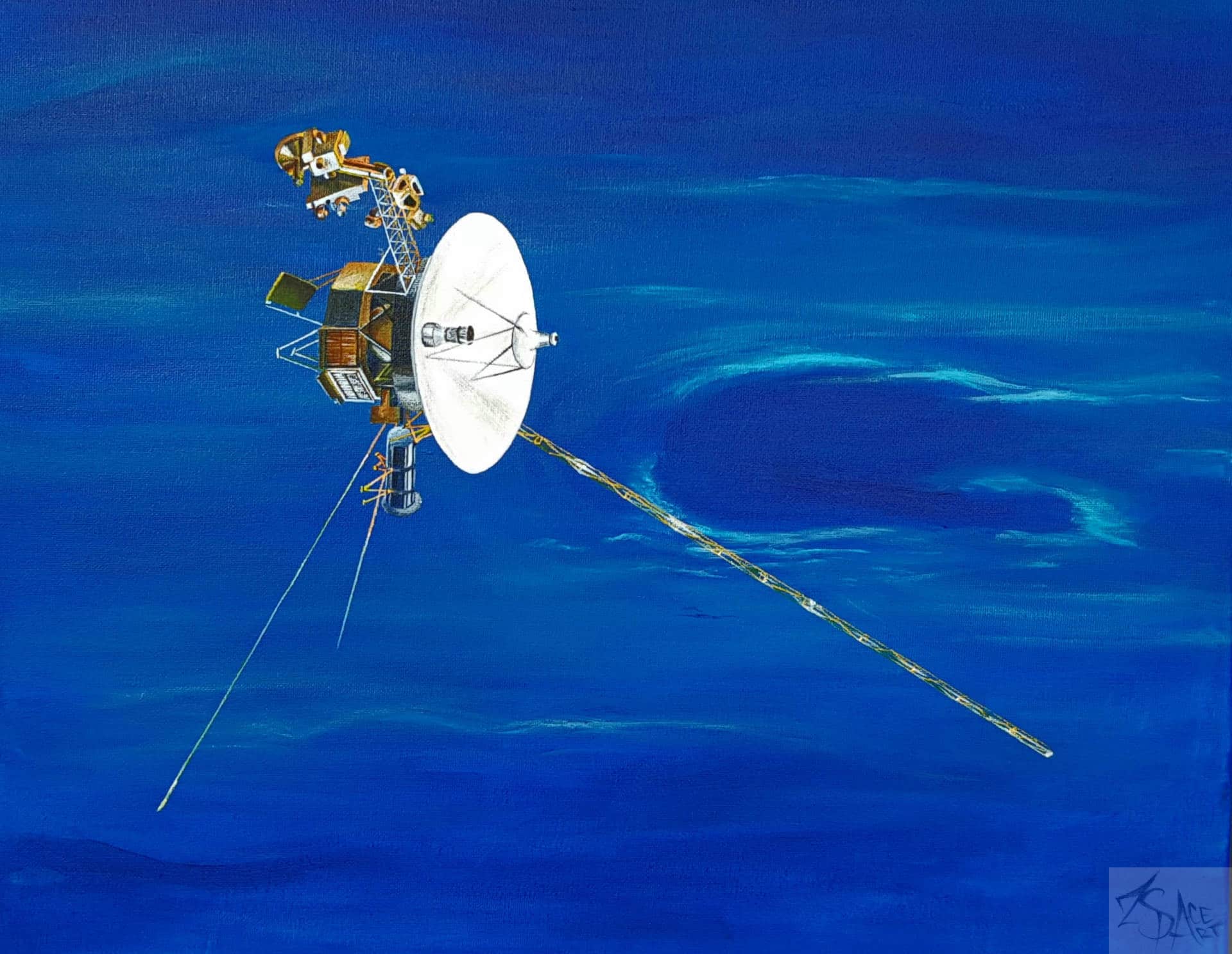
Marsquake
A complex image, in which I have tried to represent the strongest seismic activity on Mars detected by the InSight.
40×40 cm, stretched canvas, acrylic, structure paste, various techniques.
The InSight probe
InSight (Interior Exploration using Seismic Investigations, Geodesy and Heat Transport) landed on the 26th of November in 2018 on the Elysium Planitia on Mars. Its mission was originally planned for a 2-year duration, which was extended for another 2 years in January 2021.
On 19 December 2018, it deployed its seismometer, SEIS, on the surface of Mars (shown at the bottom of the image, which I painted using the photo by InSight). It placed 1.6 metres away using the robotic arm of the probe. SEIS was able to detect movements up to the atomic level. It could also measure a quake of magnitude less than 4 from 1600 km away, which is not possible on Earth, mainly due to background noise from the oceans.
Thanks to this equipment, seismic activity was detected on the red planet for the first time on 6 April 2019.
The seismometer measured more than 1,300 seismic events during its mission, and more than 50 of these gave a clear signal for the mission team to identify the epicentre of the quakes. The largest events originated from Cerberus Fossae (shown in the top of the image and based on the image of the ESA Mars Express spacecraft’s high-resolution camera), a region that shows signs of geologically young volcanism – within the last two million years.
The instrument has been used to detect several strong marsquakes. The record was a magnitude 5 event in May 2022. A seismogram (based on a NASA/JPL – Caltech diagram) is shown in the centre of the image. The shock waves from the vibrations reverberated around the planet for at least six hours.
The lander detected several large quakes of magnitude 4 or stronger in September 2021.
InSight has helped to reveal the internal structure of Mars and to gather new information about the planet’s three main layers – the crust, the mantle and the core – which has significantly changed our understanding of the planet’s interior.
Its mission ended on 15 December 2022, after 1440 Martian days (sol), or 4 years and 18 days in Earth terms. Its scientific measurements and observations have given scientists many years of work to do, and will tell us even more about Mars’ present, past and subsurface geology.


